The family dogs and cats seem to enjoy the outdoors as much as we do. But the warm months bring special challenges to pet owners—fleas, ticks, skunk encounters, and more! Here are some common summer pest problems—from ticks to fleas—and solutions.
Dogs roll in smelly things. If they aren’t fenced in, cats that go outside sometimes bring in small animals they’ve killed or just want to play with. Both dogs and cats on the loose may be attacked by wildlife or run off chasing wild creatures, have a bad encounter with a porcupine or skunk, or run into the road and get hit by cars.
Dogs and cats that spend time outside, even in enclosed yards with well-trimmed grass, or taking a walk on a leash, can pick up parasites that may even migrate onto the humans in your household. While fleas and mange mites can be mighty irritating, tick bites can cause serious, life altering diseases in people.
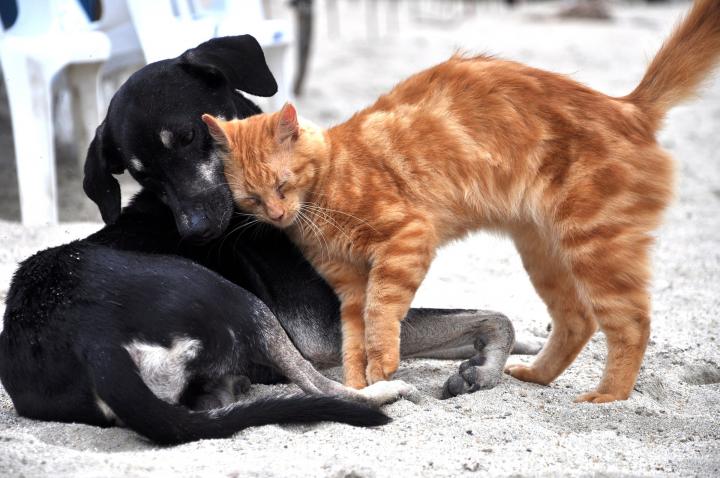
Ticks
In tick-endemic areas, even treated animals may bring in various species of disease-causing ticks, clinging to their fur, but not yet attached to the animal. Indoors, the ticks may dislodge, crawl around the house, and eventually attack a human. Some of the more serious diseases that ticks can transmit to your pet include Rocky Mountain spotted fever, Lyme disease, ehrlichiosis, and babesiosis.
That’s why it’s important to bathe, comb and brush your outdoor-loving pet before it comes into the house after being outdoors, even for a walk on a leash. Ticks will grab hold of any passing mammal as it brushes past a blade of grass or branch where the tick is waiting.
While it’s okay to trim away large mats of fur, most vets recommend against shaving even long-haired animals, because their fur has evolved to provide cooling insulation during the hot months and heat retention when it’s cold.
You can find information about protecting your pets and yourself against tick bites at the University of Rhode Island's comprehensive, up-to-date Tick Encounter website.
Flea Prevention
It's important to deal with fleas as best possible. Just one flea can multiply to 1,000 fleas in your home in just 21 days.
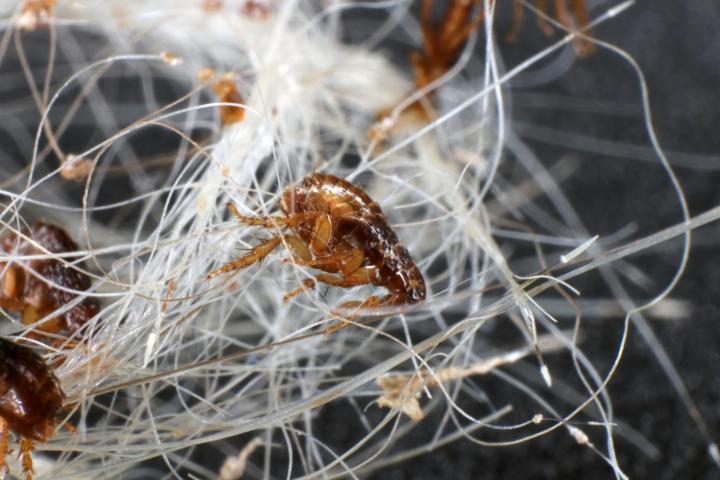
Fleas can infest your home, feasting off you humans as well as companion animals. They can cause itching, scratching, hair loss, and scabs on our pets, as well as anemia, plague and tapeworms, among other things.
Talk to your vet about a flea-prevention treatment to keep fleas at bay. Purchase only FDA-approved medicines and/or EPA-registered pesticides.
Don’t give treatments formulated for dogs to cats. Read the entire label before you use/apply the product, and follow label directions precisely.
Mange: Scabies Mite
Sarcoptic mange (also called scabies or mange) is a highly contagious skin condition caused when scabies mites penetrate the animal’s skin to lay their eggs. Once the eggs hatch, the larvae then dig deeper into the skin to mature, eventually emerging as adults that migrate across the skin to lay more eggs.
Most prevalent in the summer months, dogs acquire sarcoptic mange from environments of infected animals—e.g., dog parks, doggie daycare, grooming and boarding facilities, a friend’s dog or doghouse. In rural settings, dogs can get mange by playing with wild canines, especially foxes, or investigating their dens.
The predominant sign of mange is intense itchiness. But scratching may cause hair loss and open wounds that could lead to bacterial invasion.
The condition is readily treatable by your vet; it's similar to flea treatment, but more aggressive, with quarantining, and thorough baths. The vet can also recommend products for treating the animal’s bedding, and household furnishings. You’ll probably also need to treat other household pets.
Mange mites can also migrate onto people. If you begin suffering from itchy, oozing lesions that keep cropping up in new locations, see your doctor and mention that your dog(s) were recently diagnosed with mange.
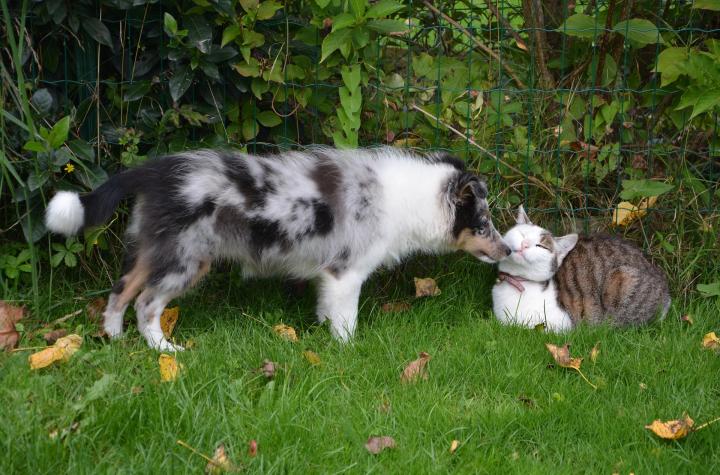
Tapeworms (Cestodiasis)
If you notice that your dog or cat is dragging its hind end across the floor, or licking its bottom more than usual, take your pet to the vet to inquire about tapeworms. The worms aren't always visible in the pet's poop so a fecal examination and treatment, if necessary, is done.
Treatment to destroy tapeworms is critical to avoid transmission to humans (typically children) and to avert damage to your pet's body. Tapeworms are usually picked up through fleas, when an animal ingests an infected flea, and when animals ingest smaller wild animals that are infected, such as rabbits, birds or rodents.
Stench and Crusty Fur
Vets have proposed any number of reasons, though no research has proven definitive, for why some dogs love to roll in animal carcasses, manure, garbage, and other stinky stuff. After a long, vigorous roll, they sometimes trot back into the house, fur crusty with the reeking remains, seeking an “attaboy” for their accomplishment.
What to do? Vets say the first step is to give the dry coat (if it’s actually dry) a thorough brushing with a brush designed for your's dog's coat, to remove mats and as much of the smelly stuff clinging to the dog’s fur as possible. Follow up with a thorough bath using a dog-friendly degreasing shampoo (ask your vet). Rinse until the dog’s coat is squeaky clean.
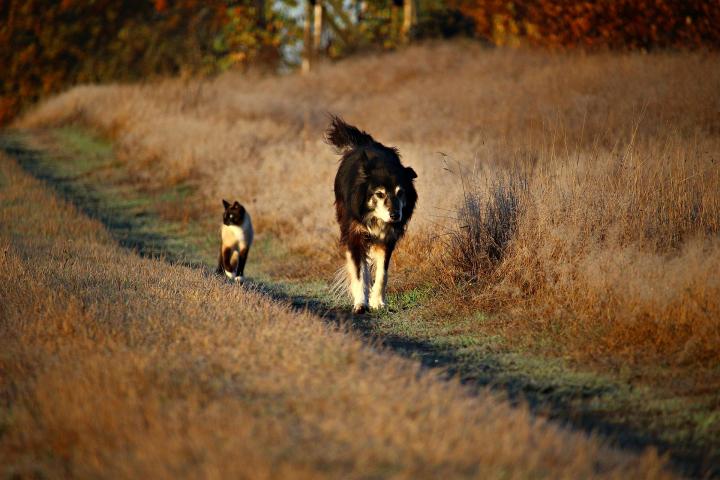
Skunk Encounters
In rural areas where wildlife abounds, or suburban areas bordering forests and other open land, dogs especially love to go out to play with (and sometimes attack) the wildlife. Although many animals will fight and bite (keep your pets’ rabies vaccinations up to date), skunks and porcupines are notorious for their unusual, generally non-lethal, but highly effective defensive techniques.
Since a skunk’s defensive spray can travel up to 15 feet, a large percentage of rural dogs will have at least one bad meet-up with a skunk. If this is your dog, you’ll smell her trotting home.
Try to keep her from coming in until you’ve had a chance to render her deskunked. Do the job as quickly as possible, to keep the skunk oils from fully penetrating your pet’s fur.
First, check your animal’s eyes for redness and swelling; flush with cool water or keep on hand a commercial eye-flush product made for the purpose (ask your vet).
To deskunk the fur, don’t mess with tomato juice, vinegar, or lemon juice. Keep one of the commercial deskunking shampoos handy, or make your own. Try to work it into your skunked pet’s fur before hosing her down.
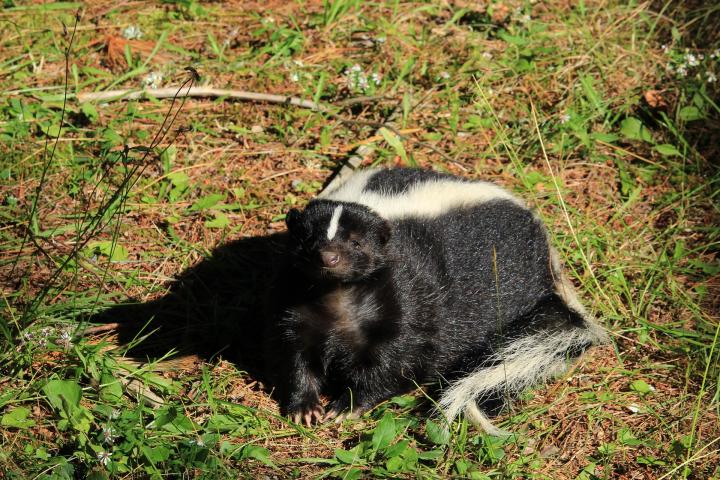
DeSkunking Recipe
- 1 quart 3% hydrogen peroxide solution (keep on hand, but replace every six months, as it loses effectiveness after that)
- ¼ cup baking soda
- 1-2 teaspoons of liquid dishwashing soap
Mix the ingredients with rubber gloves and massage it into your pet’s fur all over, making sure to avoid her eyes. Leave it in for a few minutes, then rinse it all off, follow with a traditional dog shampoo, and dry with towels. You may need more than one treatment to remove the smell entirely.
Mix this solution only when needed, and don’t store it. The chemical reaction between the peroxide and the baking soda might cause a closed container to burst.
Because skunks are mostly nocturnal, keep your dogs indoors or in a screened outdoor enclosure at night.
Porcupine Encounters
These cute, slow-moving rodents aren’t aggressive and typically keep to themselves. They can’t shoot their quills from a distance; the quills dislodge when an animal gets too close and brushes against the porcupine or gets whacked by the porcupine’s tail. Each of the wild animal’s 30,000 or so quills contain 700-800 sharp barbs. Quills may lodge in the dog’s nose, face, and lips; they may also end up inside the mouth, tongue, and throat.
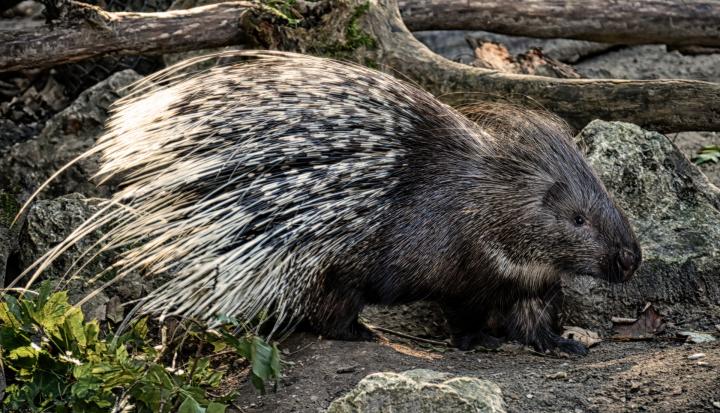
Don’t leave the quills in, as some people suggest, “to teach Fido a lesson.” If the dog rolls around and paws itself in a desperate attempt to remove the painful quills, it could break some of them so they're more difficult to remove, or drive them deeper into the muscle tissue. From there, they can migrate to internal organs and cause life-threatening damage.
If your dog gets “quilled,” don’t attempt to remove the quills yourself. Although porcupine quills sometimes work their way out, they can also migrate inward, potentially causing infections, damaging internal organs and even killing a dog.
New research also show porcupines may use their quills to kill.
As with skunks, porcupines are mostly nocturnal, so keep your dog enclosed at night.
Consider a "Catio"
Some people solve the problem of pet/wildlife encounters by building a catio, a screened outdoor enclosure for cats (also sometimes for dogs), often constructed above ground, that allows cats access to the outside to climb or run, rest, and enjoy the sights. You can find hundreds of photos, DIY plans, and pre-fabricated designs online, from small, moveable, playpen-like enclosures to elaborate treehouses, pergolas, rooftop penthouses, and additions to homes or garages. Some catios are minor retrofits to the screened porches and patios the household humans also enjoy.
A catio might be pricey if you don’t have building skills, but it’s a great way to keep your cats and dog safe from wild-animal encounters and from killing wildlife, while allowing her/him to watch birds and enjoy the greenery. It also greatly reduces (but doesn’t eliminate) the chance of picking up ticks, fleas, or mites.
Related Content
Pet Safety
Home Remedies for Pets















